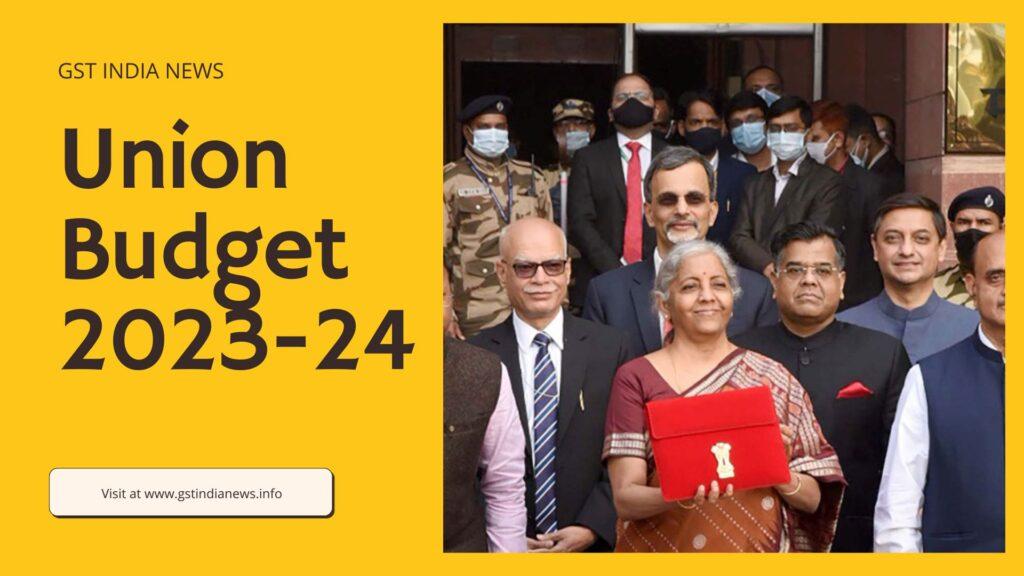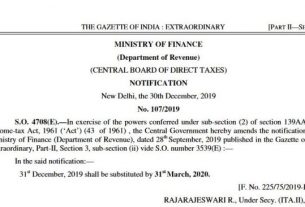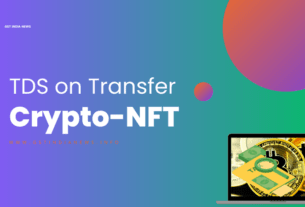The Finance and Corporate Affairs Minister Smt Nirmala Sitharaman, while presenting the Interim Union Budget for 2024-2025 in Parliament today announced that the capital expenditure outlay for the next year is being increased by 11.1 per cent to Rs 11,11,111 crore, which would be 3.4 per cent of the GDP.
She said, this is in the wake of building on the massive tripling of the capital expenditure outlay in the past 4 years resulting in huge multiplier impact on economic growth and employment creation.
As per the First Advance Estimates of National Income of FY 2023-24, presented along with the Finance Minister’s speech, India’s Real GDP is projected to grow at 7.3 per cent. This is also in line with the upward revision in growth projections for FY2023-24 by the RBI (in its December 2023 Monetary Policy Committee meeting) from 6.5 per cent to 7 per cent, prompted by strong growth in Q2 of FY2023-24.
Key highlights of the Budget are as follows
Part A
Social Justice
- Prime Minister to focus on upliftment of four major castes, that is, ‘Garib’ (Poor), ‘Mahilayen’ (Women), ‘Yuva’ (Youth) and ‘Annadata’(Farmer).
‘Garib Kalyan, Desh ka Kalyan’
- Government assisted 25 crore people out of multi-dimensional poverty in last 10 years.
- DBT of Rs. 34 lakh crore using PM-Jan Dhan accounts led to savings of Rs. 2.7 lakh crore for the Government.
- PM-SVANidhi provided credit assistance to 78 lakh street vendors. 2.3 lakh have received credit for the third time.
- PM-JANMAN Yojana to aid the development of particularly vulnerable tribal groups (PVTG).
- PM-Vishwakarma Yojana provides end-to-end support to artisans and crafts people engaged in 18 trades.
Welfare of ‘Annadata’
- PM-KISAN SAMMAN Yojana provided financial assistance to 11.8 crore farmers.
- Under PM Fasal BimaYojana, crop insurance is given to 4 crore farmers
- Electronic National Agriculture Market (e-NAM) integrated 1361 mandis, providing services to 1.8 crore farmers with trading volume of Rs. 3 lakh crore.
Momentum for Nari Shakti
- 30 crore Mudra Yojana loans given to women entrepreneurs.
- Female enrolment in higher education gone up by 28%.
- In STEM courses, girls and women constitute 43% of enrolment, one of the highest in the world.
- Over 70% houses under PM Awas Yojana given to women from rural areas.
PM Awas Yojana (Grameen)
- Despite COVID challenges, the target of three crore houses under PM Awas Yojana (Grameen) will be achieved soon.
- Two crore more houses to be taken up in the next five years.
Rooftop solarization and muft bijli
- 1 crore households to obtain 300 units free electricity every month through rooftop solarization.
- Each household is expected to save Rs.15000 to Rs.18000 annually.
Ayushman Bharat
- Healthcare cover under Ayushman Bharat scheme to be extended to all ASHA workers, Anganwadi Workers and Helpers.
Agriculture and food processing
- Pradhan Mantri Kisan Sampada Yojana has benefitted 38 lakh farmers and generated 10 lakh employment.
- Pradhan Mantri Formalisation of Micro Food Processing Enterprises Yojana has assisted 2.4 lakh SHGs and 60000 individuals with credit linkages.
Research and Innovation for catalyzing growth, employment and development
- A corpus of Rs.1 lakh crore to be established with fifty-year interest free loan to provide long-term financing or refinancing with long tenors and low or nil interest rates.
- A new scheme to be launched for strengthening deep-tech technologies for defence purposes and expediting ‘atmanirbharta’.
Infrastructure
- Capital expenditure outlay for Infrastructure development and employment generation to be increased by 11.1 per cent to Rs.11,11,111 crore, that will be 3.4 per cent of the GDP.
Railways
- 3 major economic railway corridor programmes identified under the PM Gati Shakti to be implemented to improve logistics efficiency and reduce cost
- Energy, mineral and cement corridors
- Port connectivity corridors
- High traffic density corridors
- Forty thousand normal rail bogies to be converted to Vande Bharat standards.
Aviation Sector
- Number of airports in the country doubled to 149.
- Five hundred and seventeen new routes are carrying 1.3 crore passengers.
- Indian carriers have placed orders for over 1000 new aircrafts.
Green Energy
- Coal gasification and liquefaction capacity of 100 MT to be set up by 2030.
- Phased mandatory blending of compressed biogas (CBG) in compressed natural gas (CNG) for transport and piped natural gas (PNG) for domestic purposes to be mandated.
Tourism sector
- States to be encouraged to take up comprehensive development of iconic tourist centres including their branding and marketing at global scale.
- Framework for rating of the tourist centres based on quality of facilities and services to be established.
- Long-term interest free loans to be provided to States for financing such development on matching basis.
Investments
- FDI inflow during 2014-23 of USD 596 billion was twice of the inflow during 2005-14.
Reforms in the States for ‘Viksit Bharat’
- A provision of Rs.75,000 crore rupees as fifty-year interest free loan is proposed to support milestone-linked reforms by the State Governments.
Revised Estimates (RE) 2023-24
- RE of the total receipts other than borrowings is Rs.27.56 lakh crore, of which the tax receipts are Rs.23.24 lakh crore.
- RE of the total expenditure is Rs.44.90 lakh crore.
- Revenue receipts at Rs.30.03 lakh crore are expected to be higher than the Budget Estimate, reflecting strong growth momentum and formalization in the economy.
- RE of the fiscal deficit is 5.8 per cent of GDP for 2023-24.
Budget Estimates 2024-25
- Total receipts other than borrowings and the total expenditure are estimated at Rs.30.80 and Rs.47.66 lakh crore respectively.
- Tax receipts are estimated at Rs.26.02 lakh crore.
- Scheme of fifty-year interest free loan for capital expenditure to states to be continued this year with total outlay of Rs.1.3 lakh crore.
- Fiscal deficit in 2024-25 is estimated to be 5.1 per cent of GDP
- Gross and net market borrowings through dated securities during 2024-25 are estimated at Rs.14.13 and Rs.11.75 lakh crore respectively.
Part B
Direct taxes
- FM proposes to retain same tax rates for direct taxes
- Direct tax collection tripled, return filers increased to 2.4 times, in the last 10 years
- Government to improve tax payer services
- Outstanding direct tax demands upto Rs 25000 pertaining to the period upto FY 2009-10 withdrawn
- Outstanding direct tax demands upto Rs 10000 for financial years 2010-11 to 2014-15 withdrawn
- This will benefit one crore tax payers
- Tax benefits to Start-Ups, investments made by Sovereign wealth funds or pension funds extended to 31.03.2025
- Tax exemption on certain income of IFSC units extended by a year to 31.03.2025 from 31.03.2024
Indirect taxes
- FM proposes to retain same tax rates for indirect taxes and import duties
- GST unified the highly fragmented indirect tax regime in India
- Average monthly gross GST collection doubled to Rs 1.66 lakh crore this year
- GST tax base has doubled
- State SGST revenue buoyancy (including compensation released to states) increased to 1.22 in post-GST period(2017-18 to 2022-23) from 0.72 in the pre-GST period (2012-13 to 2015-16)
- 94% of industry leaders view transition to GST as largely positive
- GST led to supply chain optimization
- GST reduced the compliance burden on trade and industry
- Lower logistics cost and taxes helped reduce prices of goods and services, benefiting the consumers
Tax rationalization efforts over the years
- No tax liability for income upto Rs 7 lakh, up from Rs 2.2 lakh in FY 2013-14
- Presumptive taxation threshold for retail businesses increased to Rs 3 crore from Rs 2 crore
- Presumptive taxation threshold for professionals increased to Rs 75 lakh from Rs 50 lakh
- Corporate income tax decreased to 22% from 30% for existing domestic companies
- Corporate income tax rate at 15% for new manufacturing companies
Achievements in tax-payer services
- Average processing time of tax returns has reduced to 10 days from 93 days in 2013-14
- Faceless Assessment and Appeal introduced for greater efficiency
- Updated income tax returns, new form 26AS and prefilled tax returns for simplified return filing
- Reforms in customs leading to reduced Import release time
- Reduction by 47% to 71 hours at Inland Container Depots
- Reduction by 28% to 44 hours at Air Cargo complexes
- Reduction by 27% to 85 hours at Sea Ports
Economy-then and now
- In 2014 there was a responsibility to mend the economy and put governance systems in order. The need of the hour was to:
- Attract investments
- Build support to the much-needed reforms
- Give hope to the people
- The government succeeded with a strong belief of ‘nation-first’
- “It is now appropriate to look at where we were till 2014 and where we are now”: FM
- The Government will lay a White Paper on the table of the house.
What Fin. Minister said on GST?
On indirect taxes, the Union Minister for Finance & Corporate Affairs Smt. Nirmala Sitharaman said that GST has reduced the compliance burden on trade and industry by unifying the highly fragmented indirect tax regime in India.
Mentioning about a recent survey conducted by a leading consulting firm, she said that 94% of industry leaders view the transition to GST as largely positive. In her Interim Budget speech, the Minister highlighted the fact that tax base of GST has more than doubled and average monthly gross GST collection has almost doubled to Rs. 1.66 lakh crore this year. States too have benefited.
States’ SGST revenue, including compensation released to states, in the post-GST period of 2017-18 to 2022-23, has achieved a buoyancy of 1.22. The Minister said that the biggest beneficiaries are the consumers as reduction in logistics cost and taxes have brought down prices of most goods and services.
Mentioning about a number of steps taken in customs to facilitate international trade, Smt. Sitharaman said the import release time declined by 47 per cent to 71 hours at Inland Container Depots, by 28 per cent to 44 hours at air cargo complexes and by 27 per cent to 85 hours at sea ports, over the last four years since 2019.
Read here why Money control says this is a Election budget?
Union Budget 2023: Income Tax India With Date
India’s 2022–2023 budget will be presented on February 1, 2023, outlining plans for an ambitious economic recovery from the COVID-19 pandemic. This comprehensive overview looks at how the budget aims to promote economic growth and investments in key sectors like health, education, transportation, infrastructure, and industry. Thus, here you can find the budget 2023 date schedule, budget 2023 expectations, and income tax-related updates of Budget 2023.

What is meant by Budget?
Budgeting can be defined as the allocation of one’s income and expenses in order to achieve financial goals. It is a way for individuals or businesses to track earnings and spending over a set period of time, usually monthly. Keeping a budget helps people recognize where their money is going so that budgeters can allocate funds for upcoming expenses, plan for special occasions, save for the future, and protect against unforeseen events. Although it may appear daunting at first, proper budgeting doesn’t have to be difficult! With careful planning and tracking of one’s finances, anyone is able to take charge of the future and find stability with their money.
Overview of India’s 2023-2024 Budget
India’s budget for 2022-2023 aimed to achieve three goals, the primary of which was to revive the economy and accelerate growth. To accomplish this, the Union Budget included substantial investments into infrastructure, healthcare, education, and other social security measures as well as subsidies on agricultural and food products. Additionally, incentives were also given to industries like manufacturing and technology in order to boost job creation and foster entrepreneurship.
Key Focus of the 2023-2024 Budget
On February 1st, 2023, the Indian Finance Minister Nirmala Sitharaman will present the Union Budget for fiscal 2023-2024. The government is focusing on infrastructure development and providing taxpayers with various tax benefits. To manage control of fiscal deficit and inflationary pressure, particular attention needs to be paid to ensure that capital/ revenue expenditure does not exceed expectations as this could lead to higher market borrowing by the government and consequently result in higher interest rates and a raise in inflation levels.
The main focus of the 2022-2023 budget will be India’s economic revival, emphasizing a push to increase overall growth. To achieve this, there was increased investment in infrastructure, new tax breaks for businesses, and a number of subsidies including those on food and agricultural products. Additionally, incentives were given to promote job creation and the development of high-tech industries.
To support these investments, the government curtailed spending in other areas such as health, education, and employment through a series of austerity measures. These included fewer funds allocated for employment programs such as Make in India, as well as budget restrictions on medical research. Despite this, however, the budget still provided for expansionary policies that may attract foreign investment and help cushion the effects of economic decline. Furthermore, additional agricultural subsidies have been set up to help farmers mitigate the current crisis and encourage further production.
Tax Reforms in the 2023-2024 Budget
The Budget proposal will be to reduce the corporate tax rate to 25%. This is further augmented with new manufacturing and services sector incentivization policies that call for a range of labor and environmental standards to be maintained as well as capital expenditure eligibility requirements. Additionally, there were deductions given in income taxes for investments into start-ups, which were also exempt from MAT (Minimum Alternate Tax).
Income Tax Slabs
With the upcoming budget, taxpayers may likely see an increase in income tax exemption limit from ₹ 2.5 lahks to ₹ 5 lakhs, as well as a doubling of the standard deduction amount from ₹ 50,000 to ₹ 1 lakh. These initiatives are seen as important steps in helping individuals keep up with rising living costs and staying ahead of inflation. Currently, those with incomes below the basic exemption limit of ₹ 2.5 lakhs for individual taxpayers do not have to file income tax returns.
Impact on Infrastructure, Education, and Healthcare
The budget 2023 also set out to be a number of measures meant to improve India’s infrastructure, education, and healthcare. There are plans to set up five new airports and two new seaports while investments were proposed for the upgradation of existing road and railway networks. The government also proposed an increase in allocations for digital literacy, mid-day meal programs as well as the improvement of access to quality healthcare and health insurance. These policies should hopefully help spur economic growth and India’s development even further in 2022-2023.
Relief Packages for Low-Income Households
The Government of India may announce a number of economic aid packages to help households and individuals dealing with the financial impact of COVID-19. These relief packages may include increased allocations for crop loan waivers, direct benefit transfers, and other assistance schemes to help low-income households survive. This is part of the government’s commitment to achieving more equitable outcomes for all Indians over the course of 2022-2023.
Check out the GST India News page for the latest updates and news on the Union budget 2023-24. See the live and latest updates on budget expectations, final updates, and the latest news on budget 2023.
General Questions on Budget
The budget is an estimate of income and expenditure for the FY 2023-2024 FY.
The ministry of finance makes the analysis of incomes and expenditures of the past year to estimate the future expenses and incomes for a specific period of time.
The government needs to make a plan for investment in various sectors for the given period. Thus it should know how much revenue they are going to collect during the year and accordingly spending plans are prepared.
The union budget is going to take place on 01.02.2023.
At 11.00 am on 01.02.2023



